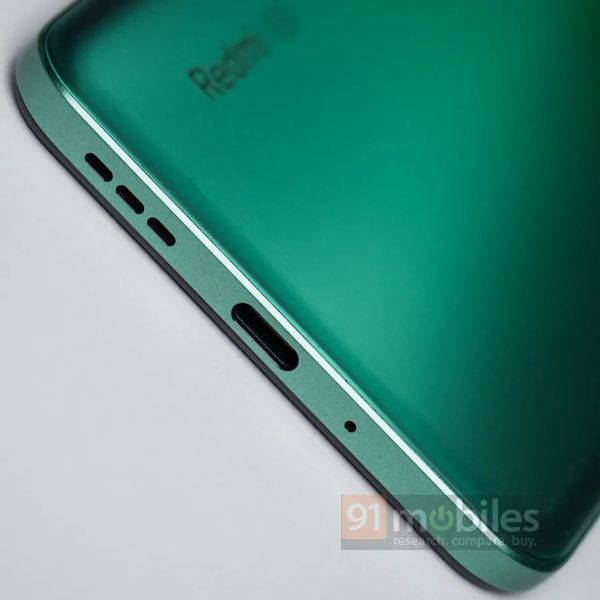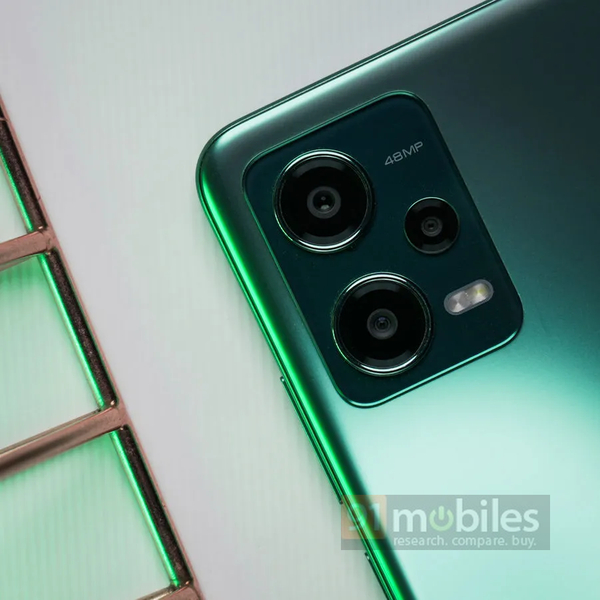
The sub-Rs 20k smartphone segment has been seeing a lot of action and the latest to make waves in this category is the iQOO Z7. We pit it against the Redmi Note 12 5G to see how it stacks up.
Design and appearance: Differently sized and notched

The iQOO Z7 and the Redmi Note 12 5G went to very different design schools and it shows. The iQOO Z7 (above) is a compact device with straight sides, a flat back and a squarish jet black camera unit, while the Redmi Note 12 is on the larger side, has a hint of curve on both the sides and the back, and has a more rectangular camera unit generally of the same colour as the back. Both phones come with tall displays in front, but the iQOO Z7 has a waterdrop notch while the Redmi Note 12 has a punch-hole notch. Both phones have plastic backs and frames, and come in different shades. While the iQOO Z7 comes with a colour-shifting Norway Blue and Pacific Night, the Redmi Note 12 (below) has a Frosted Green, Matte Black and Mystique Blue.

Which design you prefer depends on your own tastes, but the iQOO Z7 scores a huge point by being more compact and light – it is 158.9mm x 73.5mm x 7.8mm and weighs 173 grams, as against the 165.88mm x 76.21mm x 7.98mm and 188 grams of the Redmi Note 12. The iQOO Z7 also comes with slightly better splash resistance at IP54 as against the IP53 of the Redmi Note 12. All that combined with a more modern design win this one for the iQOO Z7, but we can see people getting put off by the drop notch.
Winner: iQOO Z7
Processor: Older MediaTek takes on relatively new Qualcomm
Running the show beneath those two dissimilar frames are two equally dissimilar processors. The iQOO Z7 is powered by the MediaTek Dimensity 920 processor, while the Redmi Note 12 runs on the Qualcomm Snapdragon 4 Gen 1 chip. Both are mid-segment chips, but although the Dimensity 920 is older, it is considered a better performer than the Snapdragon 4 Gen 1 on many fronts. In fact, we have seen the Dimensity 920 on devices with much higher price tags, most notably Xiaomi’s own Xiaomi 11i Hypercharge. In sheer spec and benchmark terms, the edge here lies with the iQOO Z7.Winner: iQOO Z7
Memory: RAM and storage stuff
Both phones come with 128GB storage, expandable via a microSD card (using a hybrid SIM card slot), but the iQOO Z7 steals a clear march over the Redmi Note 12 by having 6GB and 8GB RAM variants as against the 4GB and 6GB RAM variants of the Redmi Note 12. That’s another round to the iQOO Z7.Winner: iQOO Z7
Display: Matters of refresh rate and size

The Redmi Note 12 comes roaring into contention in the crucial display department. While both phones come with full HD+ AMOLED displays, the Redmi Note 12 has a significantly larger 6.67-inch display with a refresh rate of 120Hz as compared to the 6.38-inch one with 90Hz refresh rate on the iQOO Z7. We found the display of the Redmi Note 12 to be significantly brighter as well. There’s only one winner here, and it is a Note-able one.
Winner: Redmi Note 12
Cameras: The OIS Factor

On paper, seems like a walkover for the iQOO Z7. After all, the Z7 comes with OIS and a camera with a higher megapixel count (64MP against 48MP on the Note). And well, if you are going to use just one camera on the phone, then the iQOO Z7 wins this one comfortably, with its 64-megapixel main sensor with OIS delivering superb snaps, even in low light. It is a clear step ahead of the 48-megapixel sensor on the Redmi Note 12 in terms of detail. But bring other cameras into play and the Note 12 manages to sneak ahead of the Z7. While the Z7 only has a single 2-megapixel depth sensor as its secondary camera, the Redmi Note 12 comes with an 8-megapixel ultrawide camera and a 2-megapixel macro camera. Of these, the 8-megapixel ultrawide is definitely usable and even the 2-megapixel macro does a job of sorts. In the front camera department, there is not too much to choose between the iQOO Z7’s 16-megapixel sensor and the 13-megapixel one on the Redmi Note 12, with both producing beautified, smooth-skin results, but we would hand it to the Z7 by a thin margin as it seems to get slightly more details. Both phones come with a number of creative shooting options, but we think the iQOO Z7 just brings a bit more to the table at this level. That main sensor wins this round for the iQOO Z7, though.
Winner: iQOO Z7
Gaming and multimedia: Big display or faster chip

When it comes to gaming, the more powerful chip gives the iQOO Z7 a clear edge over the Redmi Note 12. Games loaded faster and ran more smoothly at higher settings on the IQOO Z7, although the difference was not so pronounced at relatively low settings. However, the larger sized and brighter display of the Redmi Note 12 makes it a better device for viewing content such as videos and shows, and even gamers will appreciate the extra real estate it offers. Both phones come with single speakers and the Redmi Note 12 seemed to serve up slightly higher volumes, but we would recommend using the 3.5mm audio jacks on both devices for the best audio experience. That processor and gaming prowess win this round for the iQOO Z7, but those into binge watching shows might prefer the Redmi Note 12.
Winner: iQOO Z7
Battery and charging: Speed vs duration

The iQOO Z7 comes with a 4,500mAh battery while the Redmi Note 12 has a 5,000mAh one. Although the iQOO Z7 has a smaller display with a lower refresh rate, it still tends to just about see out a day of normal usage, while the Redmi Note 12 goes past a single day of use quite comfortably (some credit this to the better power management of the Snapdragon chip). The iQOO Z7 comes with support for 44W charging and a 44W charger while the Redmi Note 12 has a 33W charger and supports 33W charging. However, both phones get fully charged in slightly more than an hour – we expected the iQOO Z7 to have a clear edge here but that is not the case. We are giving this one to the Redmi Note 12 as it lasts longer with a bigger display and charges just as fast.
Winner: Redmi Note 12
Software: Newer Android wins
Both phones come with their own interfaces on top of Android. The IQOO Z7 is the clear winner here. Even though its FunTouch OS is much more crowded than MIUI on the Redmi Note 12, it runs on top of Android 13, while the Redmi Note 12 runs on Android 12 which gives it a solid software edge. If you prefer a cleaner UI, we would recommend the Redmi Note 12, but overall, the newer version of Android wins this one for the IQOO Z7.Winner: iQOO Z7
General performance: Everyday stuff

n terms of general usage (web browsing, mail, messaging, social media and the like), there is not too much between the two devices. The iQOO Z7’s more compact form factor makes it easier to handle, but the Redmi Note 12’s larger display makes it a better device for watching content. We also felt that the Redmi Note 12 handled calls better than the iQOO Z7, and its side-mounted fingerprint scanner works far more smoothly than the in-display one on the iQOO Z7. The less cluttered interface of the Redmi Note 12 also makes it marginally easier to handle than the iQOO Z7. We are giving this one by a wafer-thin margin to the Redmi Note 12, but those who love more compact devices will prefer the iQOO Z7 for day-to-day use!
Winner: Redmi Note 12
Price: Counting those Rupees

The iQOO Z7 is available at Rs 18,999 for 6GB/ 128GB and Rs 19,999 for 8GB/ 128GB. The Redmi Note 12 starts at a lower Rs 17,999 but that is for a lower specced 4GB/ 128GB variant, while its 6GB/ 128GB variant is priced at Rs 19,999. If you want to save every possible penny, then the lower starting price of the Redmi Note 12 gives it an edge, but if you are looking for value for money, then the iQOO Z7 is the clear winner, offering 8GB/ 128GB at the price at which the Note 12 gives 6GB/ 128GB. The iQOO Z7 wins this one for us, as we really think that anyone spending close to Rs 20,000 should be getting at least 6GB RAM on their device.
Winner: iQOO Z7
Verdict: Which one to go for?

So, if you have a budget of under Rs 20,000, which of these two phones should you go for? Both phones have their own strengths and weaknesses, but as the face-off above reveals, the iQOO Z7 beats the Redmi Note 12 in most areas, including crucial ones like processor, camera and software. Yes, the Redmi Note 12 does have a better display, an additional useful camera and better battery life, and comes at a lower starting price, but all said and done, we think the iQOO Z7 is the better option for those focusing on performance. That drop notch might look a little dated, but if you can put up with it, the iQOO Z7 is perhaps the best smartphone you can get right now for under Rs 20,000. And it’s been a while since we said that about a phone that was not a Redmi Note.












![[Exclusive] itel S24 with 108MP camera, AI features set to launch in India soon Thumbnail](https://www.91-cdn.com/hub/wp-content/uploads/2024/04/itel-s24-design-100x70.jpg)